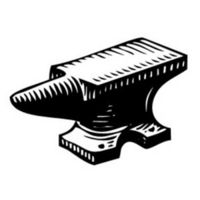Difference between revisions of "Sleeping Dragon Forge/Introduction"
imported>Torsten (Created page with "{| |- | colspan="2" style="text-align: justify-all; -moz-border-radius: 12px; -webkit-border-radius: 1px" | <br>'''<font style="color: black; font-family: Book Antigua; font-...") |
imported>Torsten |
||
| Line 3: | Line 3: | ||
| colspan="2" style="text-align: justify-all; -moz-border-radius: 12px; -webkit-border-radius: 1px" | | | colspan="2" style="text-align: justify-all; -moz-border-radius: 12px; -webkit-border-radius: 1px" | | ||
| − | <br>'''<font style="color: black; font-family: Book Antigua; font-size: 46pt;"> | + | <br>'''<font style="color: black; font-family: Book Antigua; font-size: 46pt;">Sleeping Dragon Forge</font>'''<br><br> |
<div style="text-left> | <div style="text-left> | ||
<font style="color: #black; font-family: Book Antiqua; font-size: 12pt;"> | <font style="color: #black; font-family: Book Antiqua; font-size: 12pt;"> | ||
Revision as of 17:05, 21 January 2017
|
The Blacksmith was at the heart of every country village and was very often thought of as a magician, due mostly to his mastery of iron working and the ability to understand the metallurgy of the iron that he used. The secret processes of smelting metal were responsible for many Blacksmiths being burnt as witches and wizards. Some villages banned Blacksmithing as a black art in the middle ages with anyone caught practicing the craft being put to death. What went on in the darkness of the smithy was a mystery to most people.
|
